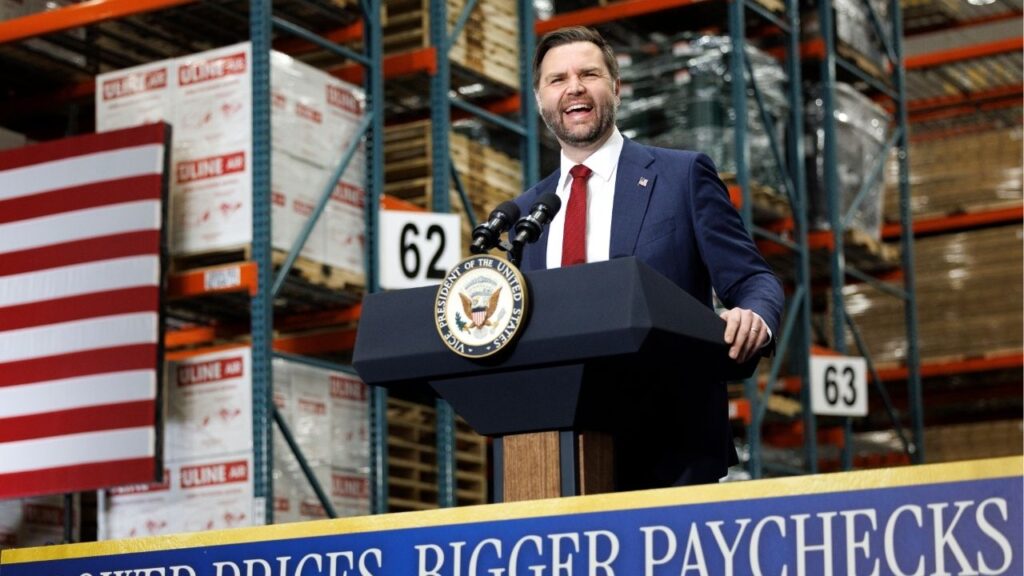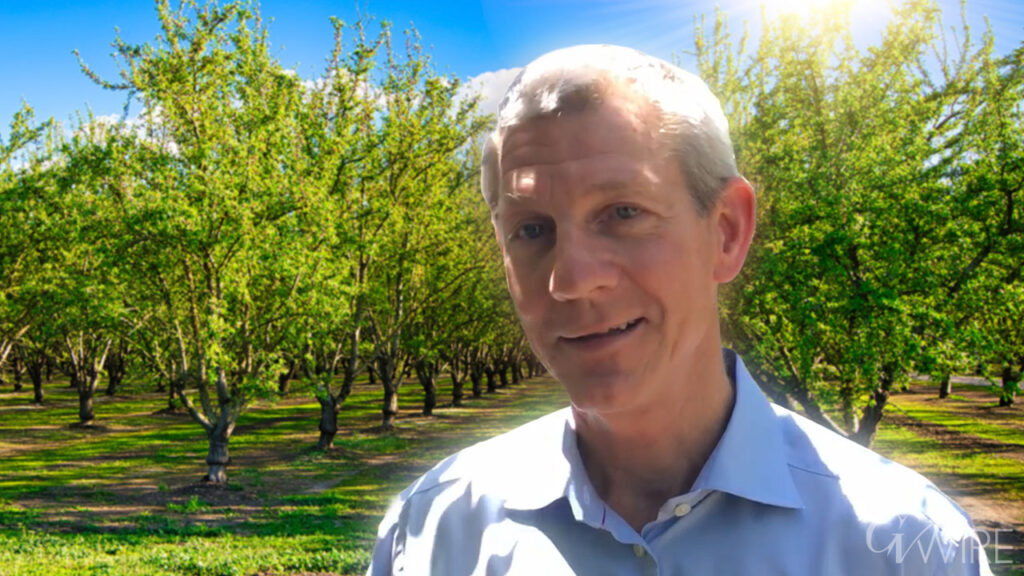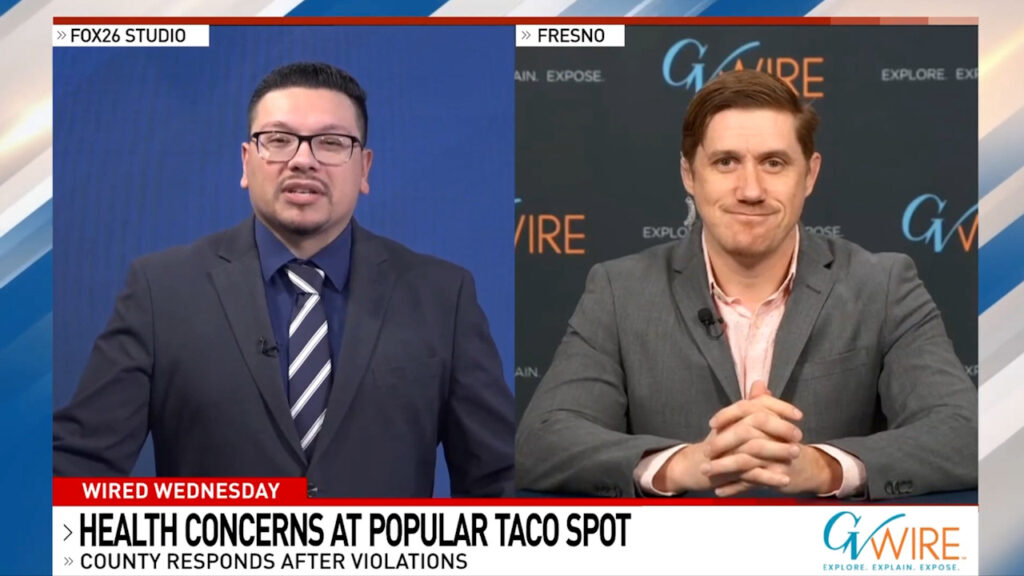Younger generations have not been drinking wine at the same rate as their parents, causing a shock to the industry. (GV Wire Composite/Paul Marshall)

- The U.S. wine industry shrank by 3% in 2023, sending a shock through the industry.
- Some experts think as many as 50,000 acres of Valley vineyards need to be pulled up to balance the market.
- To distinguish themselves, one expert says Fresno and Madera counties must focus on quality over quantity.
Share
A problem has been fermenting in the wine industry and an industry insider says the cure is pulling out tens of thousands of acres of vineyards across the state.

“And so you have a year like last year where we had hundreds of thousands of tons of grapes just hanging on the vine that didn’t get purchased throughout the state.” — Jeff Bitter, president of Allied Grape Growers
In the 1990s, when Baby Boomers were in their 30s and 40s, coming into their own, the “French Paradox” health fad swept the middle class. Even the news program “60 Minutes” covered the seemingly contradictory French lifestyle of low levels of cardiac complications despite having diets rife with rich food and of course, wine.
The craze caught on.
The level of Boomer wine consumption built the industry, said Rob McMillan, executive vice president of Silicon Valley Bank’s wine division. But with the generation aging, that level of consumption hasn’t continued.
Generation X and Millennials drink less than Boomers. And when they do, they also turn to beer and spirits more than their parents.
Now, stores and warehouses are overstocked with bottles. Wineries are brimming with grapes. Growers can’t sell their harvest. And, the rate that vineyards are being pulled up isn’t fast enough, industry insiders say.
“Despite the writing on the wall, it’s been difficult for the wine industry to adapt to a new consumer given the strength of the earnings stream from older consumers,” McMillan said. “Investing in change can be difficult when everything is going well.”

Bulk Market Hardest Hit: McMillan
The wine industry is one split in two, McMillan said. Where 13 wineries generate 70% of sales in the U.S., the remainder is divided up amongst the other 11,000 wineries.
While the premium market was able to maintain last year for the most part, growing just under 1%, it was the bulk-wine industry that bore the 3% decline suffered across the industry.
“People are just less interested in the lower price, let’s call it under-$11-bottle price,” McMillan said.
With health experts now suggesting any alcohol consumption being bad for your health, brewers and distillers are facing declines just as winemakers are. The difference is the land and capital investment required by wine grapes.
California growers, who have to deal with higher labor, equipment and regulatory costs than other regions, also have to compete with foreign grapes.
Imports from Australia, Chile and other countries can significantly undercut the cost of California grapes. In order to have the California wine label, wine has to be 100% sourced from within the state. But wine can be called “American wine” even with a certain percentage of foreign wine diluting the bottle.
That diminishing interest has backed up the supply chain.
Retailers can’t move product off the shelves, said Jeff Bitter, president of Allied Grape Growers, which is headquartered in Fresno and has a field office in Healdsburg. That means they don’t want deliveries from distributors, which means they don’t want orders from wineries. That leaves wineries’ tanks full. And that trickles down to growers.
“And so you have a year like last year where we had hundreds of thousands of tons of grapes just hanging on the vine that didn’t get purchased throughout the state,” Bitter said.

Industry Needs to Lose 30,000 to 50,000 Acres: Bitter
Wine drinkers across the globe consumed 5.7 billion gallons of wine in 2023, down 2.6% from the year before, according to the Ciatti winery brokerage report. In the U.S., consumption dropped 3%.
“All the gains made in terms of growth in the first decade of this century have now unwound,” the report states.
Of the roughly 600,000 acres of wine grapes throughout California, 15,000 have been pulled up, according to Ciatti. But that may not be enough.
Bitter said to reach balance, the industry needs to eliminate between 30,000 and 50,000 acres.
But pulling out acreage isn’t as easy as just uprooting vines. Many growers still have loans on their land.
On Jan. 1, a burn ban on vines came into effect in the San Joaquin Valley, Bitter said.
With the wire and stakes needed, it’s also hard to simply grind the vines. The Ciatti report noted that vine removal services are in short supply themselves.
“If you’ve got a 40-acre piece of land, it can cost you $100,000 just to clean it up, just to get it ready for the next crop,” Bitter said.
Pandemic Created False Sense of Security
Many wineries overextended themselves in terms of debt, noted several winemakers in a San Francisco Chronicle article published earlier this month.
One Monterey County winemaker predicted 2024 could be the year of “a good-sized housecleaning.”
Pandemic consumption caused a sort of a blip in consumption, said Nat DiBuduo, sales associate with Alliance Ag Services. Back when DiBuduo was president of Allied Grape Growers — his 18 year tenure ending in 2018 — he warned of oversupply. Two years later, though, the pandemic happened.
Shelter-at-home orders sent people on a buying spree for grocery store wines. After those orders were lifted, the outdoor nature of tasting rooms lent themselves to raging popularity. But that merely delayed the inevitable.
“Because of the demand, I don’t think growers were responding to that need to pull out,” DiBuduo said.

What Can Fresno/Madera County Wineries Do to Distinguish Themselves?
In his presentation at the 2024 Regional Economic Forecast, ag broker Sullivan Grosz spoke of the dire situation facing winegrape growers in the Central Valley.
Grosz has heard estimates that 50,000 acres of wine grapes needs to be removed out of the Central Valley alone.
“The juice that comes from our wines goes to low-tier wines, people are drinking enough of those,” Grosz said.
Growers in the Central Valley have been trying to diversify.
While some winegrowers bemoan the state of the industry, the premium market has fared decently, though it’s not immune, McMillan said.
Cheaper land and resources can lead to a good quality product at a price that can compete against beer and spirits.
Over the past decade, Fresno and Madera counties have tried to establish themselves as a destination market for wineries.
Lodi did a good job of creating a destination with hotels and restaurants, McMillan said.
McMillan said he has been advocating for winegrowers in the area to differentiate themselves. Despite having cheaper inputs and land costs than Napa Valley, Fresno County growers can’t compete with Australia or Chile when it comes to savings.
“You don’t want to be stuck with a commodity in California and then compete against, let’s just say, a generic chardonnay,” McMillan said.
Focusing on quality versus quantity is a choice by growers rather than necessarily being a consequence of an ecosystem, he said.
McMillan said a few wineries in Fresno County have focused on creating premium lines.
However, because of ample sun and fertile ground, Fresno growers have historically focused on volume.
But it takes good technique to grow premium wines. McMillan said good wine grapes like to struggle a little bit. Growers make the vines work harder and in return, the plant goes overboard in ripening the grape, he said.
That cost though, comes in the yield. Fresno or San Joaquin County grapes could produce anywhere from 10 to 12 tons per acre, whereas Napa Valley vines might only produce four.
McMillan said there are only two ways to turn around a struggling industry.
“You either improve demand or you decrease price,” McMillan said. “It all gets down to value. And value is defined as quality over price. And so, you either increase that quality somehow — either that’s perceived, somebody’s marketing — or something in the farming.”
RELATED TOPICS:
Categories

Valley Crime Stoppers Seeks Man Wanted for DUI

Clovis Police Step Up DUI Patrols Friday

















